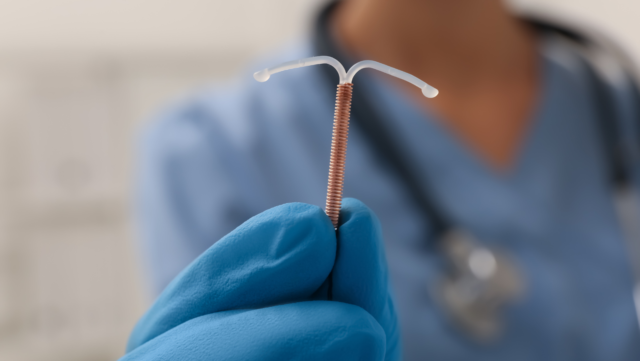
While the pill is still the most widely-used form of contraception among American women, the intrauterine device (IUD) is steadily becoming one of the most common forms of birth control. According to the Centers for Disease Control and Prevention (CDC), 14% of women ages 15-49 are currently using the pill, while 10% are currently using long-acting reversible contraception like IUDs.
Tryon Medical Partners gynecology specialist Dr. Erin Stone shares a few facts everyone should know about this popular birth control method.
There are two kinds of IUDs.
IUDs are small, usually T-shaped devices made of flexible plastic or copper. Through a simple medical procedure, a healthcare provider places the device inside the uterus. After placement, an IUD provides continuous pregnancy protection for several years.
There are two main types of IUDs:
- Hormonal IUD: This type of IUD works by releasing a small amount of the hormone progestin. It thickens the cervical mucus so semen can’t get into the uterus to reach the egg and thins the lining of the uterus. Four brands of hormonal IUDs are available today in the U.S.
- Hormone-free IUD: One type of hormone-free IUD is wrapped in a small piece of copper. The copper IUD prevents the sperm from getting to the egg by interfering with the movement of the sperm which prevents pregnancy.
Dr. Stone adds, “The copper IUD is unique for a couple of reasons: it can be inserted up to 24 hours after sexual intercourse and it will still prevent pregnancy, so it can also function as emergency contraception. It’s especially useful for breast cancer patients and those with a history of blood clots because it doesn’t have hormones.”
IUDs are one of the best methods of birth control.
IUDs are popular for a few key reasons:
- Effective. The American College of Obstetricians and Gynecologists recommend Long Acting Reversible Contraception (LARC) devices like IUDs as their number one option for birth control because they are the most effective reversible option – they are 99.4% effective against pregnancy (as good as or better than permanently tying your tubes!)
- Low-maintenance. IUDs are quick to insert and require little day-to-day attention. Dr. Stone emphasizes that if a patient walks in wanting an IUD, they can do the procedure on the very same day. “Once the IUD is in, the patient is all set,” she says. “I ask them to come in 10 days after the procedure to check in, then once a year after that. Otherwise, they’re good to go.”
- Inexpensive. Although each health insurance company and plan is different, IUDs are covered almost 100% of the time under the typical plan.
- Private. If the patient is in a situation where they don’t want someone else to know about their contraceptive choices (a parent, partner, etc.), the IUD offers a very private and less visible option.
- Convenient. IUDs often mitigate the pain and discomfort associated with menstruation. Some varieties of IUD prevent menstruation entirely, or slow the frequency and severity. This is especially helpful for those who are perimenopausal.
For these reasons and more, Dr. Stone emphasizes the IUD’s popularity: “I put in one to two IUDs a day,” she notes. “My patients can’t get enough of them.”
Side effects are minimal, yet differ patient to patient.
People are often most nervous about infertility, weight gain, issues with menstrual products and pain during the placement process – but in reality, most people don’t. Learn more in Four IUD myths busted.
If you’re curious about IUDs, reach out to Tryon today to book an appointment and learn more.

